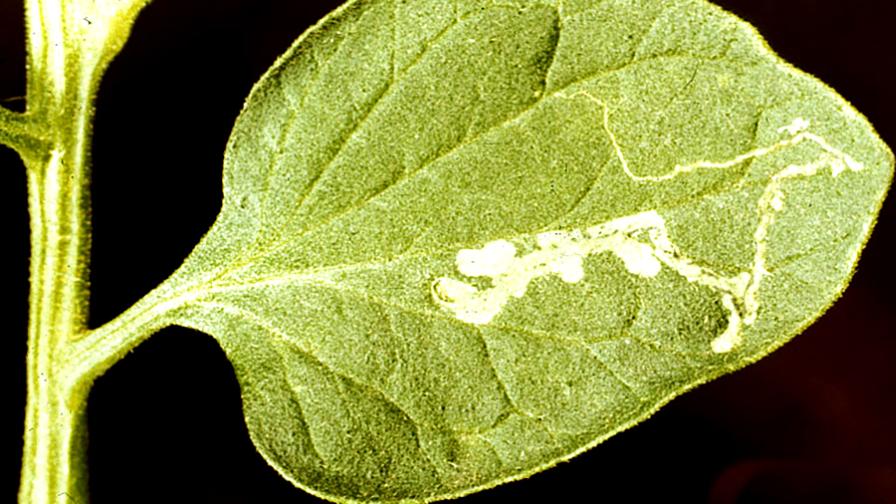Don’t Let Leafminers Duck Under Your Crop Protection Radar

Leafminers are particularly damaging on celery, crucifers, cucurbits, okra, potato, and tomato. In South Florida, populations peak between November and March, while in Central Florida they are a problem in both spring and fall.
Photo courtesy of Clemson University
The two major species of leafminer in Florida are the vegetable leafminer (Liriomyza sativae) and the American serpentine leafminer (L. trifolii).
The adults are small yellow and black flies about the size of a gnat. The female punctures or “stipples” the leaves with her ovipositor to lay eggs in the leaf tissue or to feed on sap.
Leafminer damage is easily recognized by the irregular serpentine mines in leaves.
Survival and Spread
Leafminers have a relatively short life cycle. The time required to complete the life cycle ranges from 21 to 28 days, so numerous generations can occur annually in South Florida.
Females can produce hundreds of eggs over their life span. Eggs are inserted into plant tissue just beneath the leaf surface and hatch in about three days.
Flies feed on the plant secretions. Females often make feeding punctures, particularly along the margins or tips of leaves, without depositing eggs.
There are three larval stages. The maggots feed on tissue between the upper and lower leaf surface, leaving a winding trail or pattern through the leaf for approximately seven days.
The mature larva emerges from the mine, drops from the leaf, and burrows into the soil to pupate.
Both leafminers have a wide host range. In addition to vegetables, there are numerous cultivated and broad-leaved weed species that harbor leafminers in Florida.
Management Methods
An integrated pest management program that stresses conservation of natural enemies is important for the successful control of leafminer. Chemical control can be difficult due to the feeding habits inside the leaf of the host plant. Insecticides that specifically target the leafminer are recommended, as use of broad-spectrum materials may decimate beneficial insects, including those that attack leafminer. This often results in a larger leafminer problem if the pesticide reduces numbers of leafminer parasites.
Several parasites have been recorded in Florida, but parasitic wasps are most common. Up to 90% parasitism in non-sprayed tomatoes has been observed in Florida.
It is important that your scouting program include both an assessment of the number of leafminers present and the natural enemies.
To determine whether leafminer larvae are dead or alive, leaflets can be held up to the sun and examined with a hand lens. Living larvae are a pale yellow and flush with the end of the mine. The back and forth feeding movements are readily visible, although movement may cease when larvae are disturbed or molting. Dead larvae do not show movement and are usually discolored and removed from the ends of mines.
Field sanitation is another important control tactic. Weeds and abandoned crops can serve as reservoirs for this pest. After harvest, crops should be destroyed as soon as possible to avoid having them serve as reservoirs for new infestations.
Consult UF/IFAS recommendations for currently labeled insecticides for leafminer control in Florida.










